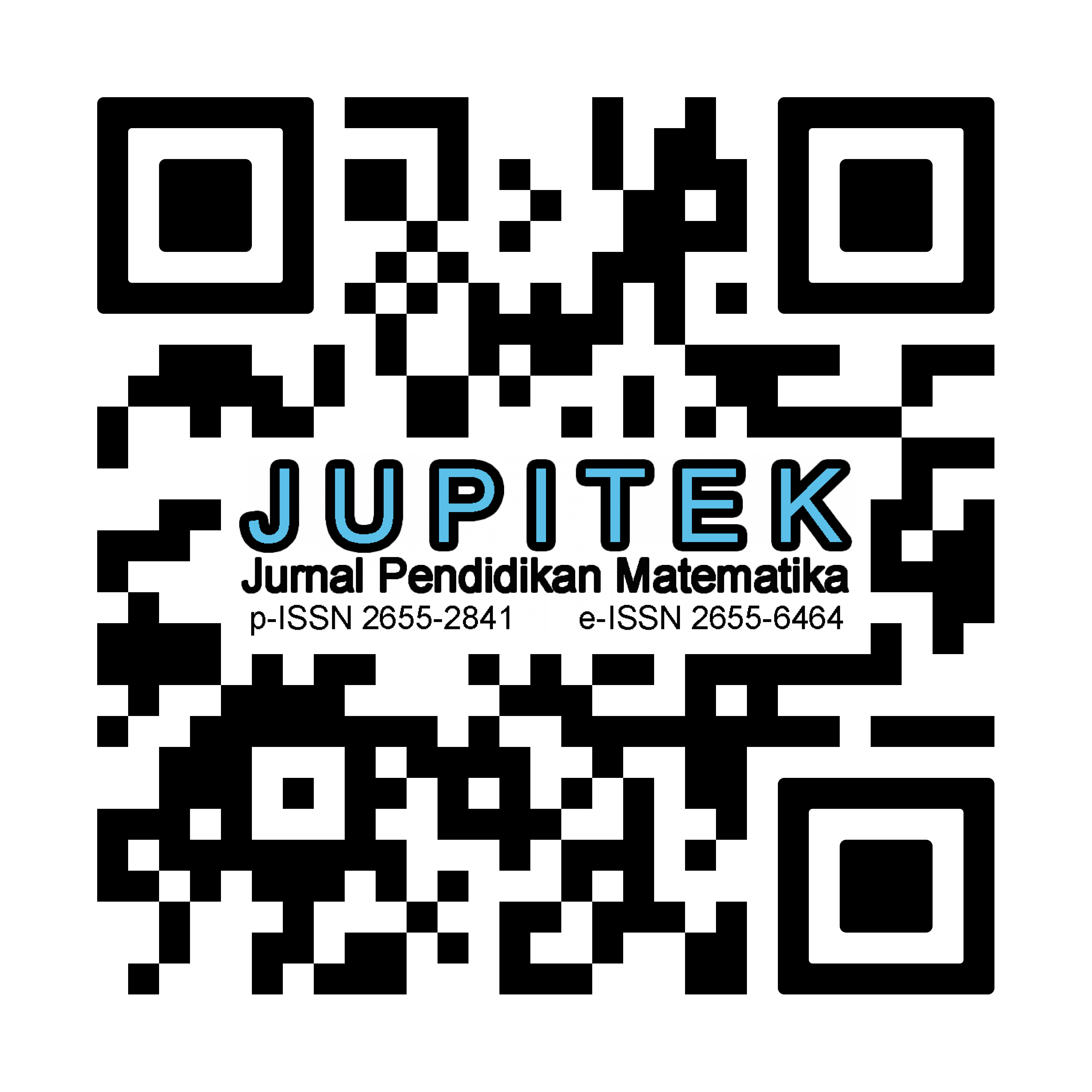ANALISIS KESULITAN BELAJAR SISWA DALAM MENYELESAIKAN SOAL LUAS PERMUKAAN DAN VOLUME KUBUS
Abstract
This research is a descriptive qualitative study that aims to determine students' learning difficulties in solving surface area of the cube and the volume of cubes problems. The population in this research is as many as 84 students in the second grade of SMP 1 Morotai State Junior High School, spread over 3 classes. The sample in this study was student II, amounting to 24 students. Based on the results of the study, it shows that in question number 1 there are 7 students or 30.44% who experience conceptual difficulties, there are 4 students or 21.74% who experience fact difficulties, there are 6 students or 26.08% who experience difficulties in the rules, there are 5 students or 2.74% who experience difficulty skills, while in question number 2 there were 14 students or 60.87% who had difficulty with the concept, there were 6 students or 26.08% who had difficulty in fact, there were 1 student or 4.35% who had difficulty in the rules, and there were 2 students or 8 , 69% who experience difficulty skills, then in question number 3 there were 18 students or 78.26% who experienced difficulty in the concept, there were 2 students or 8.69% who experienced difficulties in fact, there were 2 students or 8.69% who had difficulty in the rules, there were 1 student or 4, 35% experienced difficulty skills, and in question number 4, there are 11 students or 47.83% who experience concept difficulties, there are 7 students or 30.44% who experience fact difficulties, there are 3 students or 4.35% who have difficulty in the rules, there are 2 students or 8 , 69% experienced difficulty skills. The conclusion that can be taken is that most students still have difficulty in solving problems surface area of the cube and the volume of cubes.
Downloads
References
Arsyad, Azhar. 2002. Media Pembelajaran, Ed. I,Cet. 3, Raja Grafindo Presada, Jakarta
Ahmadi dan Supriyono 2004. Psikologi Belajar. Rineka Cipta: jakarta
Hamalik, Oemar.1983. Metode Mangajar dan kesulitan – kesulitan Belajar : Bandung Tarsito
Sugiyono, 2007 Statistik Untuk Penelitian. Alfabeta. Bandung
Thoha, M.C. 2003. Teknik Evaluasi Pendidikan. Jakarta : Raja Grafindo Pertsada
Copyright (c) 2019 Rauman Mahmud

This work is licensed under a Creative Commons Attribution-NonCommercial-ShareAlike 4.0 International License.
License and Copyright Agreement
By submitting a manuscript to Jurnal Pendidikan Matematika (JUPITEK), the author(s) certify and agree to the following terms:
- Originality and Authority: The submitting author is authorized by all co-authors to enter into this agreement. The manuscript describes original work that has not been published previously in a peer-reviewed journal, nor is it under consideration for publication elsewhere.
- Approval: Its publication has been approved by all author(s) and by the responsible authorities of the institutions where the work was carried out.
- Rights: The authors secure the right to reproduce any material that has already been published or copyrighted elsewhere.
- Licensing and Copyright: Authors retain the copyright to their work.
- License Grant: The authors grant Jurnal Pendidikan Matematika (JUPITEK) the right of first publication, with the work simultaneously licensed under the Creative Commons Attribution-NonCommercial-ShareAlike 4.0 International (CC BY-NC-SA 4.0).
- Self-Archiving: Authors are permitted and encouraged to deposit the published version of their article in institutional repositories, on their personal websites, and other academic platforms, with proper acknowledgment of its initial publication in Jurnal Pendidikan Matematika (JUPITEK).






.png)


